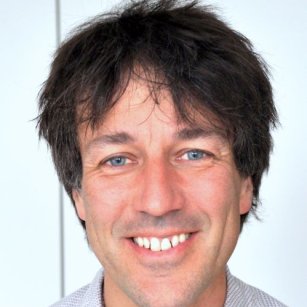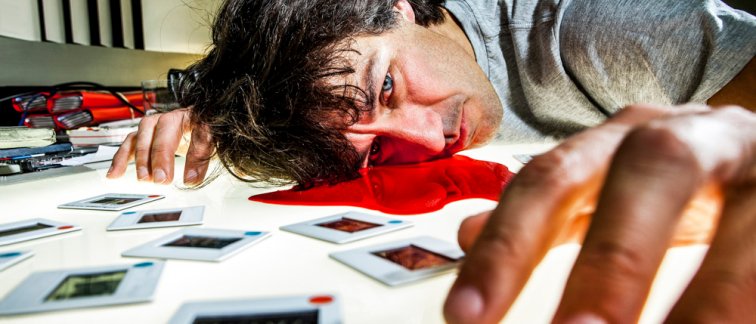On the trail of forensic science
Aalders entered the forensic field by accident After studying physics, he began doing research in clinical physics, he began doing research in clinical physics, a field in which physical methods are applied in healthcare. “At one point we developed an improved method for diagnosis in oncology. After this method was used by a fellow researcher to examine bruises in athletes, the idea arose to use this method more broadly, namely for measuring the speed of the healing process. If you can measure that, then you can measure the time of onset and that helpful for diagnosing child abuse and domestic violence, for example.”
Collaborating on new techniques
While developing the “bruising” method, Aalders came in touch with forensic doctors at the GGD’s injury clinic. Aalders then held a lecture on his diagnostic method for the Netherlands Forensic Institute (NFI). They were immediately enthusiastic and saw many opportunities for using medical diagnostics for forensic investigations. Aalders: “At a crime scene, biological traces must be found, recorded and preferably analyzed on the spot in a short period of time. There was a lot of need for methods to extract information from materials you might find at a crime scene, such as saliva, semen and blood.” Inspired by Aalders’ talk on diagnostic method, the NFI worked with Aalders and his team, and the Co van Ledden Hulsebosch Center (the forensic research institute of the University of Amsterdam) to develop an improved method for determining the time of death.
From lab to court
The improved “time of death” method is now well tested and scientifically published, but it is not yet used as evidence in court. Aalders: “That last step is incredibly difficult. This costs lots of time and money and you have to look for collaborations to create a support base.” Its impossible to test the method on all possible scenarios, making it easy for eloquent lawyers to refute the method for a specific situation. It takes a long breath to convince the Public Prosecutor’s Office (OM), the police and forensic doctors of the usefulness of implementing the new methods. The police in the Hague have now conducted a successful pilot, testing the method at a number of crime scenes, with good results. In addition, Aalders educates about the method throughout the country to share his knowledge and encourage application of the method.
Research for both crime scene and treatment room
Aalders and his team are also working on other methods. “At Amsterdam UMC, people can donate their bodies to science after death. We use these bodies to research new forensic techniques. We have our own cemetery, where we measure how fast a body decomposes.” With more knowledge about these decomposition processes, it will be possible to more accurately determine how long ago someone died and under what circumstances.

Annemieke van Dam, postdoc researcher at Amsterdam UMC, received a VENI grant in 2020 that launched a new line of research, for the detection and determination of the age of contact traces, such as fingerprints and body fluids. A fingerprint contains a lot of information about a person’s diet and allergies, and includes substances such as bio markers (substances that can indicate whether a person is sick), testosterone, estrogen, as well as drugs or alcohol. This information can be used in identifying both the victim at a crime scene, as well as the perpetrator who left traces.
The “contact tracing” methods are still in development, but can also be of great value in the treatment room. The fact that these non-invasive methods no longer involve a needle may be perceived by the patients as pleasant. The method is also useful in home care. Aalders: “With an increasingly aging society in which independence is central, it is practical to be able to take measurements in people’s homes. This makes diagnosis faster, easier and cheaper.”
From breeding ground to practice
The methods developed by Aalders and his team provide greater insight into the circumstances at a crime scene and thus a greater chance of finding the truth and bringing the right people to justice more quickly. Violent crimes in the community, such as child abuse can be detected and addressed more quickly. Non-invasive “contact tracing” methods can detect health problems and health risks in the community more easily. Aalders’ work takes place primarily in the laboratory and self-created crime scenes. The investigations are like a breeding ground for new developments in forensic and medical diagnostics. Aalders and his team connect these new methods to practice, making an important contribution to the welfare of society.
APH researcher Maurice Aalders is professor of Forensic Biophysics at Amsterdam UMC and co-director of the Co van Ledden Hulsebosch Center, an interdisciplinary center of excellence for forensic scientific and medical research at the University of Amsterdam (UvA).

